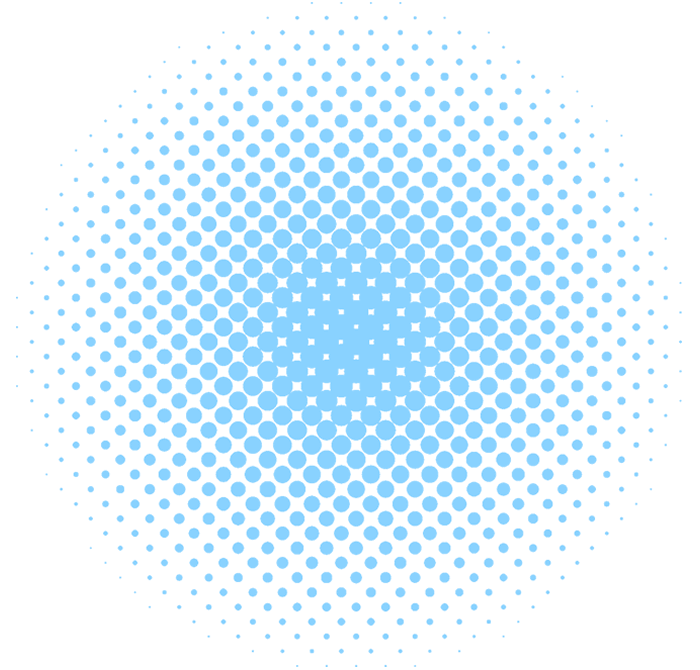

About Electrooptics
Environmental changes and changes in the regulatory pattern do often influence the concentration and distribution of ions on both sides of bacterial membranes. These gradients affect directly the electrophysical property of the cell. Electric fields induce cellular polarisations which can be recognised by optical measurements. The difference between longitudinal and lateral cell bulk polarizability is named Anisotropy Polarizability (AP). The integral value of cell polarisation effect corresponds to complex terms of morphometric, physiological, or biochemical characteristics of the cells in vivo. Additional valuable parameters of electrooptical analysis are the actual average cell size and concentration of cell cultures.
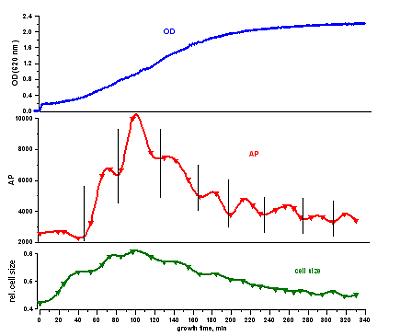
We have enhanced the sensitivity and precision of electrooptic analysis to investigate the dynamic of bacterial cell growth during fermentation. For all tested suspensions of Gram-positive and Gram-negative bacteria we have detected surprisingly regular oscillations in the polarisation of cell structures. This finding reveals new insights into repeated changes in the physiological state of bacterial cultures during fermentation processes. We found, that these changes correlates to phases of high cell division rates, biosynthesis activity and stress level variations. With our electrooptic measurements we are now able to trace in real time the culture development as events of adaptation reactions, ordered sets of cell cycles (cell divisions) and various changes to kinds of energy consumption or toxically conditions.
The existence of a partial synchronity of cell divisions during culture growth is not in conflict with the (nearly) impossibility to see steps of increasing cell numbers by counting when the generation time is short.
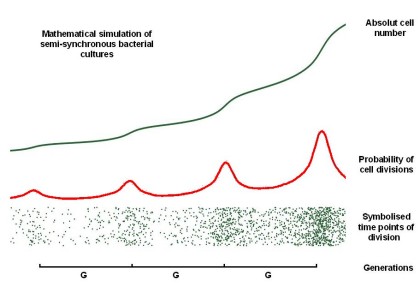
When cultures reaches the so called stationary phase, changes in the polarisability often have a strong correlation to oscillating changes in cell vitality (e.g. survival rate):
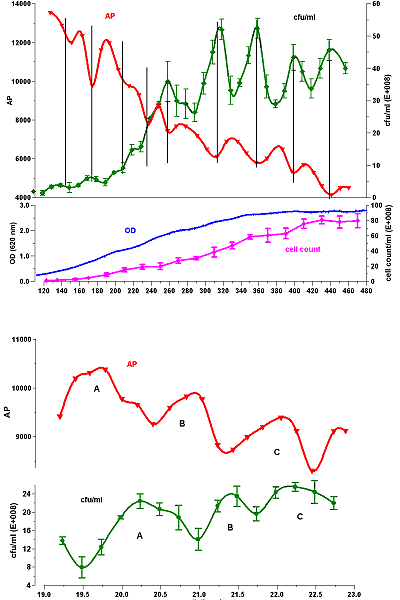
This finding points out, that electrooptical analysis is a suitable method for a fast prediction of best time points of cell harvest when living cells are the product (starter cultures, probiotic cells, vaccines, competent cells …). With our electrooptical analysis we have also seen versatile AP patterns due to often unrecognised or neglected changes in the fermentation conditions. The actual age or state of the preculture, unintended small variations in OD or pH and other details in cell handling results often in different CIF profiles (although recordings of standard parameters do not indicate strong discrepancies).
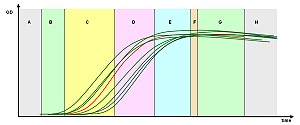
Our data are showing the potential of electrooptical analysis as a new tool for monitoring and understanding of culture development. Our findings might also explain widely known variations in yields of biotechnological processes. The electrooptic monitoring provides the opportunity to use rapid measurements of complex culture parameters for process control. Checking fundamental points of culture development and defining novel kinds of pass/fail criteria may increases the efficiency of fermentation development and plant productivity.
